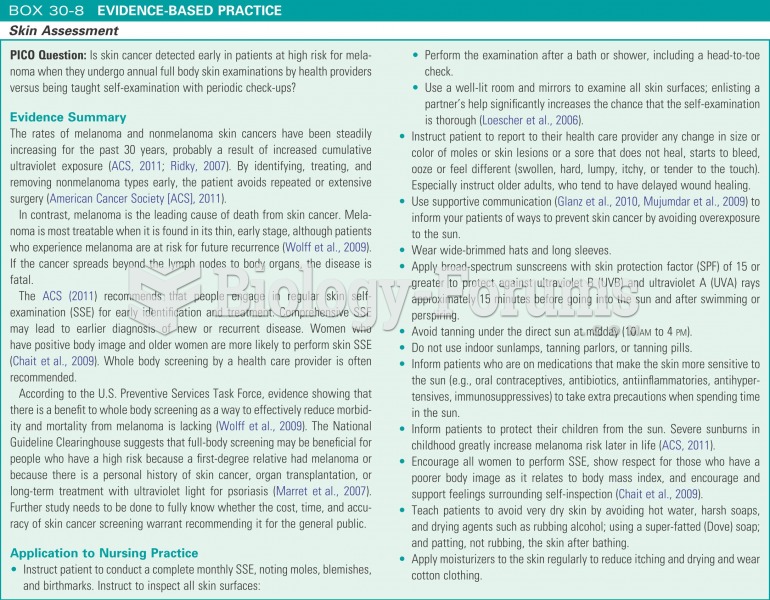|
|
|
According to research, pregnant women tend to eat more if carrying a baby boy. Male fetuses may secrete a chemical that stimulates their mothers to step up her energy intake.
A seasonal flu vaccine is the best way to reduce the chances you will get seasonal influenza and spread it to others.
The top 10 most important tips that will help you grow old gracefully include (1) quit smoking, (2) keep your weight down, (3) take supplements, (4) skip a meal each day or fast 1 day per week, (5) get a pet, (6) get medical help for chronic pain, (7) walk regularly, (8) reduce arguments, (9) put live plants in your living space, and (10) do some weight training.
Cytomegalovirus affects nearly the same amount of newborns every year as Down syndrome.
Excessive alcohol use costs the country approximately $235 billion every year.
 The Movius line separates regions of the world where Acheulean hand axes were made from regions wher
The Movius line separates regions of the world where Acheulean hand axes were made from regions wher
 When Union troops pushed toward Richmond in June of 1862, these slaves crossed the Rappahannock Rive
When Union troops pushed toward Richmond in June of 1862, these slaves crossed the Rappahannock Rive





